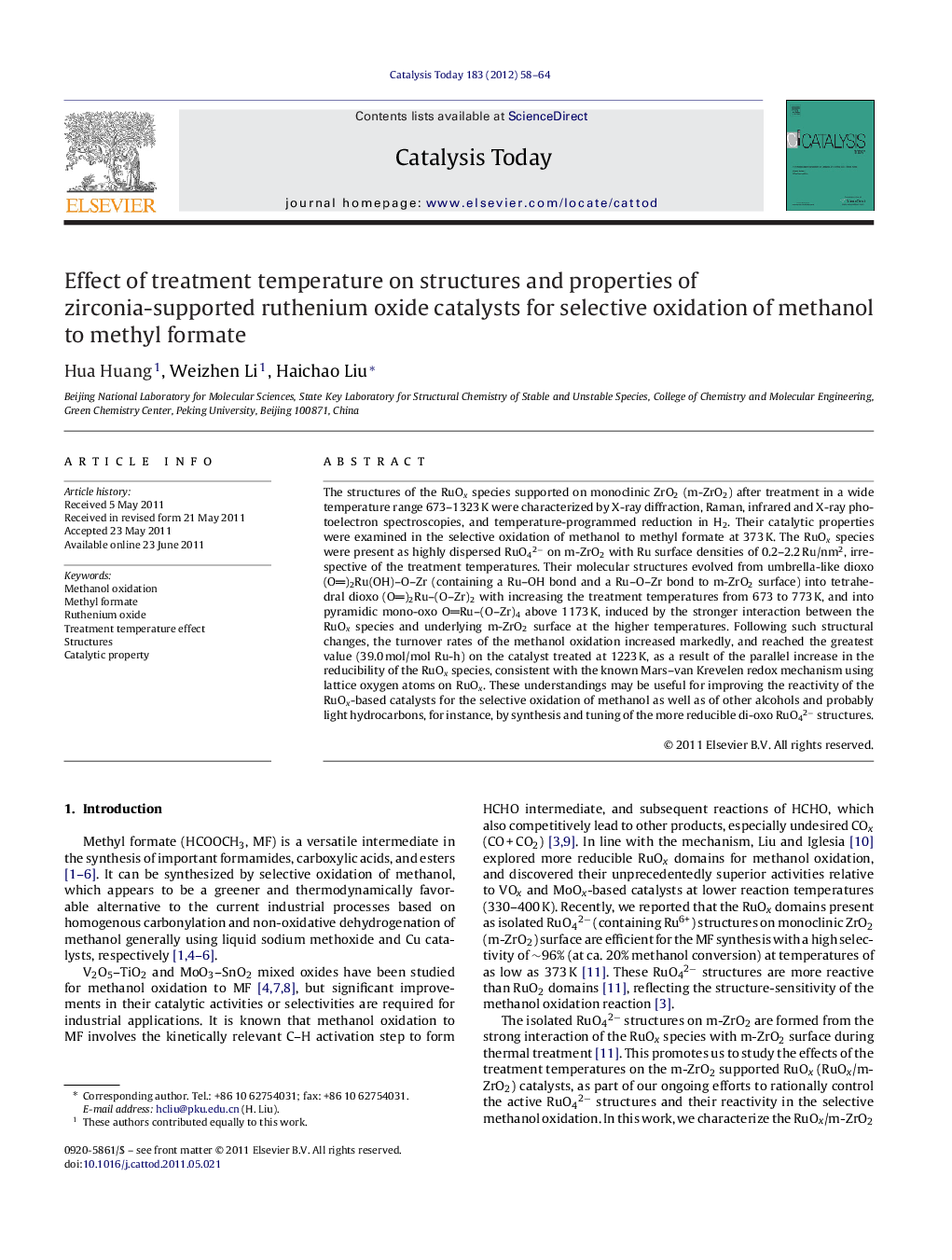| کد مقاله | کد نشریه | سال انتشار | مقاله انگلیسی | نسخه تمام متن |
|---|---|---|---|---|
| 55414 | 47052 | 2012 | 7 صفحه PDF | دانلود رایگان |

The structures of the RuOx species supported on monoclinic ZrO2 (m-ZrO2) after treatment in a wide temperature range 673–1323 K were characterized by X-ray diffraction, Raman, infrared and X-ray photoelectron spectroscopies, and temperature-programmed reduction in H2. Their catalytic properties were examined in the selective oxidation of methanol to methyl formate at 373 K. The RuOx species were present as highly dispersed RuO42− on m-ZrO2 with Ru surface densities of 0.2–2.2 Ru/nm2, irrespective of the treatment temperatures. Their molecular structures evolved from umbrella-like dioxo (O)2Ru(OH)–O–Zr (containing a Ru–OH bond and a Ru–O–Zr bond to m-ZrO2 surface) into tetrahedral dioxo (O)2Ru–(O–Zr)2 with increasing the treatment temperatures from 673 to 773 K, and into pyramidic mono-oxo ORu–(O–Zr)4 above 1173 K, induced by the stronger interaction between the RuOx species and underlying m-ZrO2 surface at the higher temperatures. Following such structural changes, the turnover rates of the methanol oxidation increased markedly, and reached the greatest value (39.0 mol/mol Ru-h) on the catalyst treated at 1223 K, as a result of the parallel increase in the reducibility of the RuOx species, consistent with the known Mars–van Krevelen redox mechanism using lattice oxygen atoms on RuOx. These understandings may be useful for improving the reactivity of the RuOx-based catalysts for the selective oxidation of methanol as well as of other alcohols and probably light hydrocarbons, for instance, by synthesis and tuning of the more reducible di-oxo RuO42− structures.
Figure optionsDownload high-quality image (172 K)Download as PowerPoint slideHighlights
► Treatment temperatures significantly influence the structures of isolated RuO42− species on m-ZrO2, in the range 673–1323 K.
► The structural evolution of RuO42− species leads to parallel changes in their reducibility and catalytic reactivity.
► The greatest methanol oxidation rate is obtained at 373 K on the catalyst treated at 1223 K.
Journal: Catalysis Today - Volume 183, Issue 1, 20 March 2012, Pages 58–64